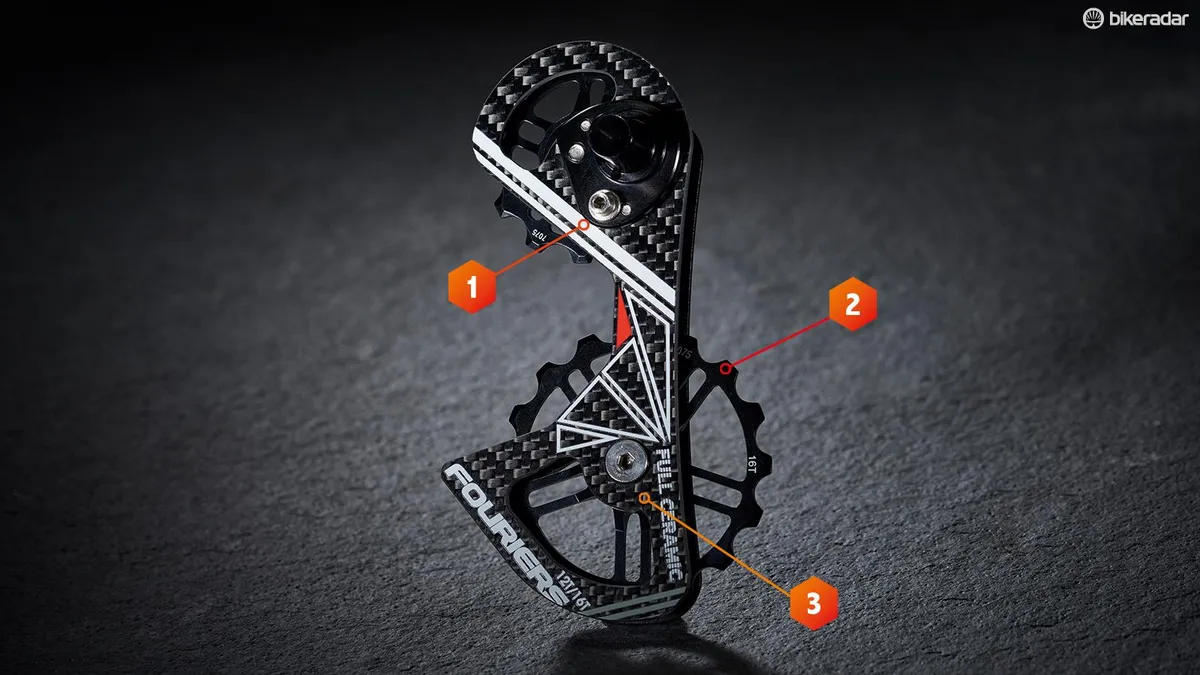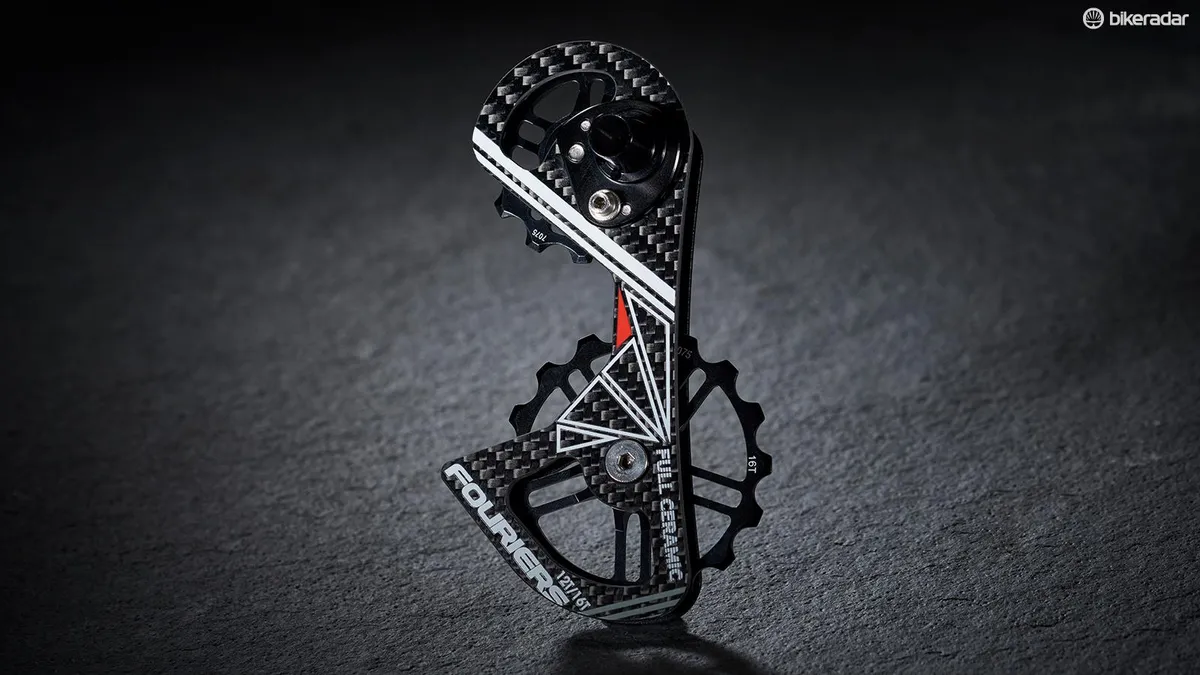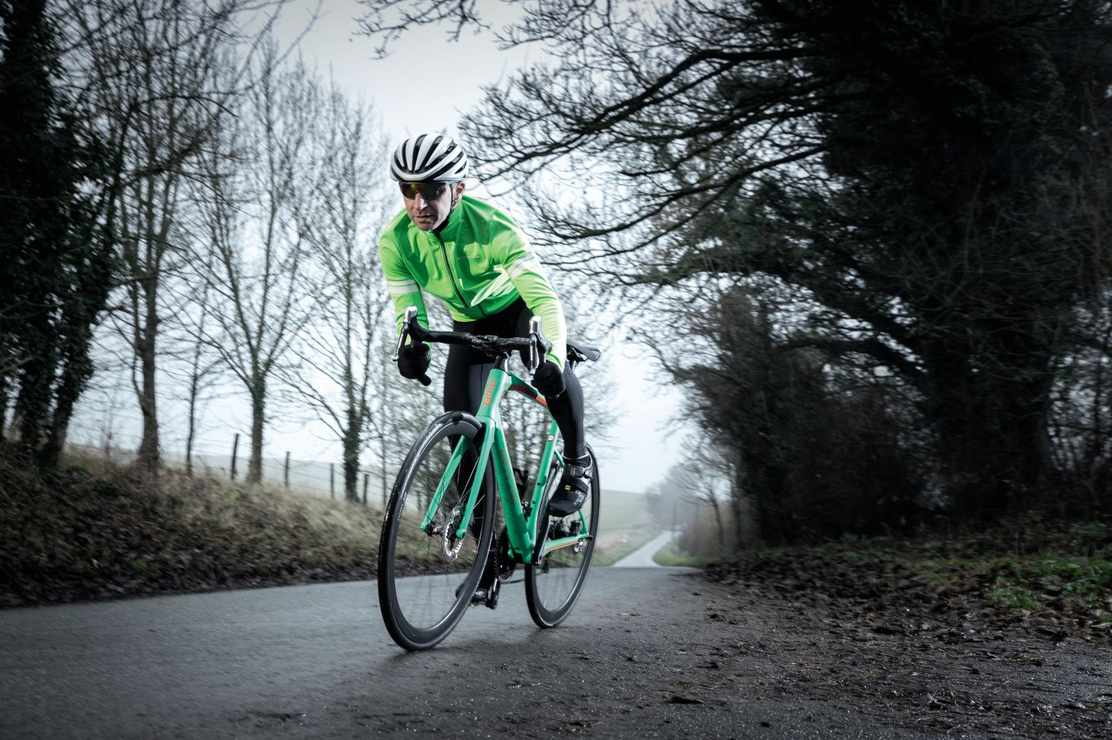Friction is a drag. If you’re obsessed with efficiency and want gains, no matter how marginal, then maybe Fouriers has the answer.
This Fouriers cage features carbon and 6061 aluminium cage plates with 7075 aluminium CNC-machined jockey wheels, and is compatible with Dura-Ace 9000/9070 and Ultegra 6800/6870, with versions to fit other groupsets. Fitting isn’t too involved, but requires a new, longer chain – mine needed two extra links.
The feeling of an efficient drivetrain is satisfying, and so long as it remains that way, the Fouriers cage is a positive addition
The enlarged jockey wheels are the most visible change. I replaced a 40g Dura-Ace 9000 rear derailleur cage with 11-tooth jockey wheels with the 62g Fouriers item, sporting a 12-tooth upper and 16-tooth lower. It’s accepted that a bicycle chain runs more efficiently and with less friction when turning on a larger diameter cog, as the chain isn’t turning as tightly.
When considering a cassette, the chain line comes into play, so simply cross-chaining from big ring to large sprockets is counter-productive because it creates more friction than you’d save from using bigger sprockets.
In theory, oversized jockey wheels allow the chain to move more freely, and assuming everything else is perfectly set up, should improve efficiency. Adding ceramic bearings multiplies the friction savings compared to standard bushings, as a finger flick would spin one of these jockey wheels for over 30 seconds when most standard jockey wheels barely spin at all.
On the road the drivetrain felt more slick than before the swap. Although the old one had only covered 2,000 miles, a new chain helped, and the system’s characteristic noise was all but silenced. Shifting felt sharper and more crisp.
Could I detect any speed increase or decrease in the effort required to ride on the road? Not to any measurable degree. The feeling of an efficient drivetrain is satisfying, and so long as it remains that way, the Fouriers cage is a positive addition, but add the cost of a chain to the cage, and the outlay becomes more than marginal.
For the competitive rider, this is one more performance box ticked, but for the rest of us, budget may be a more important factor.
A closer look at the Fouriers Ceramic Rear Derailleur Cage

1. Fitting
Fitting only requires a couple of hex keys to remove the old jockey wheels and cage pivot bolt.
2. CNC
The aluminium jockey wheels are precision CNC-machined to higher tolerances than the usual plastic items.
3. Ceramic
Two of the most expensive parts of the cage assembly are the least visible.
Ceramic bearings
Often touted as the holy grail for bike bearings, ceramic has much to recommend it. The silicon nitride is hard, resists wear and can be manufactured into perfectly round balls that can then be polished smoother than any metal.
With no metallic elements, they will also never oxidise or rust.
While their fast, almost frictionless spinning is without question, some doubt their longevity in applications where the bearings are under load and suffer impacts, citing the ability for ceramic to damage steel bearing races.
Another issue is with the inevitable filth that bicycles are subjected to. Adding lubrication to bicycle ceramic bearings increases friction, and dirt ingress, as always, is a problem.


